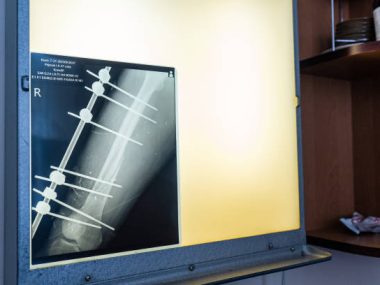How much is a CT scan without insurance? In the ever-evolving landscape of healthcare, one question often weighs heavily on the minds of individuals facing medical procedures:
“How much is a CT scan without insurance?” Medical imaging, such as computed tomography (CT) scans, plays a crucial role in diagnosing and monitoring various health conditions, but the cost of these procedures can be a source of uncertainty and stress, especially for those without insurance coverage.
In this guide, we’ll delve into the intricate world of CT scans and their associated expenses when insurance coverage is not an option.
By the end, you’ll be better equipped to navigate the complexities of healthcare costs, make informed decisions about your medical needs, and understand how to manage the financial aspects of obtaining a CT scan without insurance.
So, let’s embark on this journey to demystify the pricing of CT scans and empower ourselves to take charge of our health and finances.
Also Read:
How Much Does Adderall Cost without Insurance?
How Much Does a Crown Cost without Insurance?
How Much Is a CT Scan without Insurance?
A CT scan, short for computed tomography, is a crucial medical imaging tool used to diagnose and monitor various health conditions.
However, the cost of a CT scan without insurance can be a significant concern for individuals facing this medical procedure.
The expense of a CT scan varies widely depending on several factors.
On average, the cost of a CT scan without insurance can range from $500 to $3,000 or more.
The price is influenced by factors such as the type of CT scan (e.g., head, chest, abdomen), the complexity of the procedure, the geographic location of the healthcare facility, and the negotiated rates between the facility and the patient.
The absence of insurance coverage may seem daunting, but there are avenues for managing these costs.
Many healthcare providers offer discounts for self-pay patients, and payment plans can often be arranged.
Additionally, some government assistance programs and charitable organizations provide financial aid to individuals in need.
Navigating the world of medical expenses without insurance can be challenging, but understanding the factors that impact CT scan costs and exploring available assistance options can help individuals make informed decisions about their healthcare and alleviate some of the financial burden associated with this vital diagnostic tool.
Factors Affecting CT Scan Costs
Several factors influence the cost of a CT scan, making it a variable expense for individuals.
Understanding these factors is crucial when considering the price of this important medical procedure.
- Type of CT Scan: The complexity and purpose of the CT scan greatly affect its cost. For example, a routine head scan typically costs less than a full-body scan or one with contrast dye.
- Geographic Location: The cost of healthcare services can vary significantly by region and even within the same city. Urban areas tend to have higher prices than rural ones.
- Healthcare Facility: Different hospitals or clinics may charge different rates for the same procedure. Prestigious or specialized facilities often command higher prices.
- Additional Procedures: If contrast dye or additional imaging is required, it can substantially increase the overall cost of the CT scan.
- Provider Negotiations: Some healthcare providers negotiate rates with insurance companies, resulting in lower costs for insured individuals. Those without insurance may not benefit from these negotiated rates.
- Self-Pay Discounts: Many healthcare facilities offer discounts to self-pay patients, helping to mitigate costs for those without insurance.
- Financial Assistance Programs: Government assistance programs, charities, and hospitals’ own financial assistance initiatives can provide relief for individuals with limited financial means.
Overall, the cost of a CT scan can vary widely due to multiple factors.
Therefore, it’s essential for patients to inquire about pricing, explore available discounts, and investigate potential financial aid options to manage this expense effectively.
Alternatives to Traditional CT Scans
While traditional CT scans are highly effective for diagnostic purposes, there are alternative imaging methods and technologies that can be considered based on specific medical needs, cost considerations, and the avoidance of radiation exposure.
Here are some alternatives to traditional CT scans:
- MRI (Magnetic Resonance Imaging): MRI uses strong magnetic fields and radio waves to create detailed images of the body’s internal structures. It is often used for soft tissue imaging, making it a valuable alternative for certain conditions.
- Ultrasound: Ultrasound uses high-frequency sound waves to produce images of the body’s organs and tissues. It is non-invasive, safe, and commonly used for prenatal care and assessing abdominal and pelvic issues.
- X-Rays: For certain bone-related issues, X-rays may be a suitable alternative. They are cost-effective and provide good imaging of bones and some tissues.
- PET (Positron Emission Tomography) Scan: PET scans are used to detect metabolic changes in cells and are often used for cancer diagnosis and staging.
- 3D Imaging Techniques: Advances in 3D imaging technology, such as 3D ultrasound and cone-beam CT, offer enhanced visualization for specific applications like dentistry and orthopedics.
- Virtual Colonoscopy: This CT alternative is used for colon cancer screening and involves a less invasive procedure than traditional colonoscopy.
- Functional MRI (fMRI): fMRI is used to study brain activity and can be an alternative for specific neurological assessments.
It’s important to note that the choice of imaging modality depends on the patient’s condition, the information required, and the physician’s recommendation.
Each alternative has its advantages and limitations, and the decision should prioritize the most accurate and safe diagnostic approach for the individual’s healthcare needs.
Also Read:
How Much Is a Root Canal without Insurance?
What Happens If You Don’t Use Insurance Money for Repairs?
Conclusion
Understanding the cost of a CT scan without insurance is essential for informed healthcare decision-making.
While prices can vary significantly based on factors like location, type of scan, and facility, individuals without insurance should explore options for cost mitigation.
These options may include negotiating self-pay discounts, seeking government assistance programs, or utilizing charitable organizations.
Despite the financial challenges, it’s crucial not to forgo necessary medical imaging, as early diagnosis and treatment can be life-saving.
By researching costs, exploring assistance avenues, and discussing payment plans with healthcare providers, individuals can navigate the complexities of CT scan expenses, ensuring both their health and financial well-being.







1 comment
The author’s ability to draw connections between the topic and everyday life is commendable.